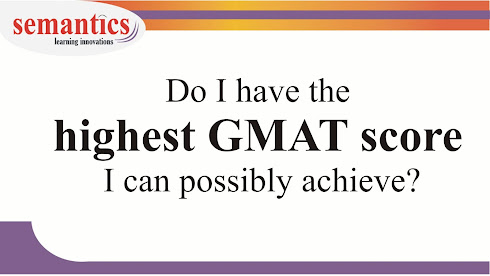The GMAT verbal section uses multiple-choice questions to measure your ability
- to read and comprehend written material,
- to reason and evaluate arguments and
- to correct written material to conform to standard written English.
Typical reading comprehension questions you get in GMAT.
1. The main idea or central theme of the
passage
2. Information specifically mentioned in
the passage (mostly line numbered)
3. Information implied in the passage
4. The tone, intent or mood of the passage
5. The author’s point of view that’s
projected through the article
6. What could have logically preceded or
followed the passage
7. The scope of the passage
8. What is true or untrue of the passage
9. What is / are the applications of the
ideas
Here are some cues to keep in mind, when you read the
passage.
1. Summarize each para in your own words
While reading a
passage make a mental map; what each of the paragraphs deals with, the author’s
intent…
Sample:
The problem is the problem of success itself. Earlier Brazil was a food deficit country, now it is a food surplus one. With surplus production of food have come the problems of storage and in turn the problem of capital being tied up in food grains. The solution that everybody seems to talk about is diversification - into fruits, flowers, fisheries and animal husbandry. This, of course, is easier said than done. First, the farmer has to be convinced of the need to market his produce, which cannot be done without providing him infrastructural support - roads and cold chain. Then there must be someone to do the marketing. After all,even the most progressive farmer has to be assured of a market and of returns on his investment. Of course physical infrastructure is not everything. Knowledge infrastructure - how to deal with perishable produce and where to take it - is also important.
Summary: Diversification of crops, as solution to problems arising from food surplus, can be successfully implemented only when farmers are provided with physical and knowledge infrastructure.
The Summary usually comprises the main point of the passage
and the different views
2. Notice opinions
When you read the passage, notice the different points of
view.
You will get questions based on person A’s/B’s… opinion or
Authors opinion..
Sample:
“Initially the Vinaver theory that Malory’s eight romances, once thought to be fundamentally unified, were in fact eight independent works produced both a sense of relief and an unpleasant shock.”
There are three points of view in the line above
1. Vinaver’s view – There are 8 books
2. Somebody view– The books are unified
3. Authors view – the books produced both a sense of relief and a shock
Each paragraph will have many opinion/counter opinions.. Identify all of them.
3. Notice thought reversals- but/however..
These words indicate a change in opinions/views…
Positive view to a negative view.. to a positive view…
“ It might seem that certain traits would clearly define a
species as a keystone species; for example, Pisaster ochraceus is often
a…………………. But such predation on a …………………………………… roles. Moreover,
……………………………and at certain sites sand burial is responsible for eliminating
mussels.”
Words like But/Moreover.. indicate thought reversals.
4. Skim through descriptive data
Some passages have illustrative data.
Skims through
illustrative matter and scan through meaty points
Sample
Descriptive data: “There…………..
violet, blue and red”
These line talk about the shapes,colours, sizes..
You need to quickly skim these statements and get the gist of the paragraph as a whole. When you observe an opinion/claim….. read the statements intently.
5. Make a mental map of the entire passage to identify the layout (example para 1:claim, para 2: evidence 1, para 3: evidence 3...)
While reading
segregate the meaty statements from purely illustrative matter.
Sample:
“Studies serve for
delight, for ornament, and for ability. Their chief use for delight is in the
private and retiring, for ornament is in discourse, and for ability is in
judgment and disposition of business. Reading and pursuing knowledge allow us to do three
things: entertain ourselves in private, adorn or embellish our speech and
increase our ability to, for example, make better judgments and decisions in
conducting our business. For expert men can execute and perhaps judge of
particulars, one by one, but the general counsels, and the plots and
marshalling of affairs come best from those that are learned.
laziness, referring too much to our reading,
dropping quotes everywhere, for example, is just showing off; and reacting
to life according to the rules we’ve read is the characteristic of a scholar,
some one who spends too much time in school, someone who doesn’t get out much
into the real world"
The passage is about
the benefits of reading- for delight, for communication and for better decision
making. However, too much reliance on reading is acceptable, nor is using
knowledge at every context welcome.


























